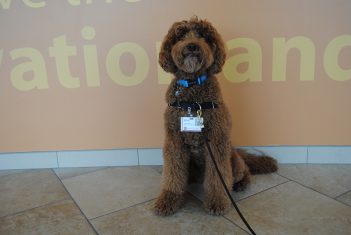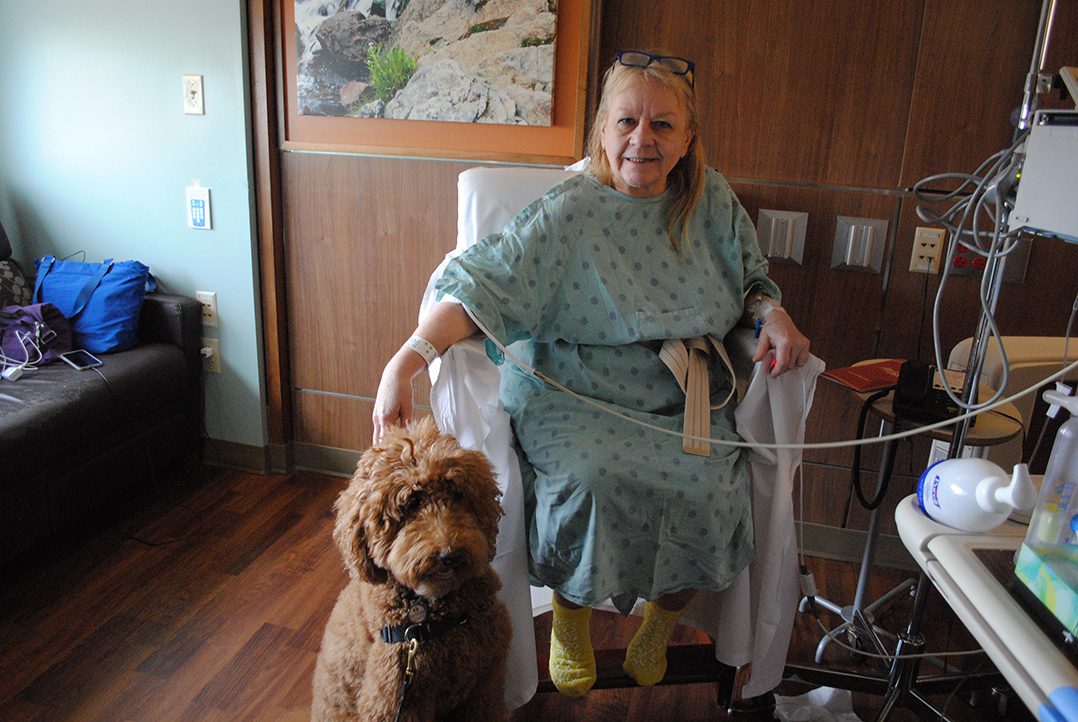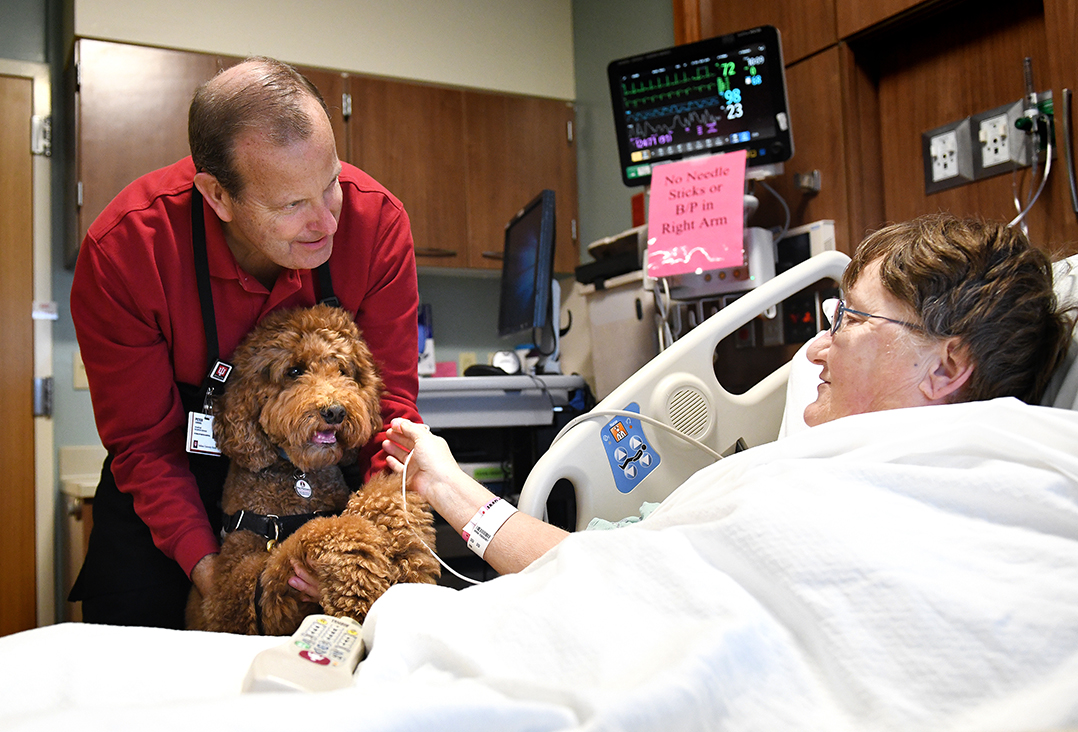Quigley has been a therapy dog for five years and recently began serving at IU Saxony Hospital in Fishers The 11-year-old labradoodle started in November 2018 to kick off a therapy dog program at IU Saxony.
“We’ve been at IU North for five years, so the volunteer coordinator asked us if we would be willing to help start a program out here since we are familiar with the procedures and everything. We were happy to do that because we do see the benefits it brings to patients,” said Nancy Canning, who serves as Quigley’s handler with her husband, Peter.

The Cannings live in Westfield.
Although the Cannings and IU Health staff have seen the benefits therapy dogs for patients, such as higher pain tolerance, requiring less pain medication, lower heart rate, blood pressure improvement and reduced anxiety, they also boost staff morale.
“Hospital team members work on all ranges of emotion from delivering a new baby (at IU North) or having to tell someone they were diagnosed with cancer, so knowing that there’s that little spark of joy a dog can bring, just like when you go home and your dog greets you at the door, we are kind of recreating that feeling at a hospital,” said Berkley Rios, the senior marketing associate of regional PR and digital engagement for the IU Health Indianapolis suburban region.
Recreating that feeling has been successful so far. When Quigley exits the elevator at IU Health Saxony to go on her rounds, hospital team members and patients light up at the sight of her.
“Many patients tell us, ‘Oh, I’ve been missing my dogs at home,’ and this gives them a quick touch with an animal they are used to having on a daily basis,” Nancy said.
In addition to lending physical and mental benefits, Quigley also provides comfort, distraction or both when a patient may be going through a minor but painful procedure, such as getting an IV placed.

Quigley is the only therapy dog at IU Saxony. IU North has six, one of which is Quigley. Depending on the success with Quigley, IU Saxony might expand its program.
Certifying a therapy dog is approximately $100 if handlers themselves teach basic commands, such as sit, stay, lay or leave it. The dog must demonstrate it won’t vocalize or run away in the midst of loud noise. The dog also must be comfortable around hospital equipment, like IV poles or tennis balls at the end of a walker’s legs.
Moreover, a therapy dog must be able to obey up to 22 commands.
Peter and Nancy taught Quigley the commands and then paid for the certification. The process took approximately one year.
Nancy stressed that all breeds of dogs can be certified. But she said even rescue dogs make great therapy animals. Temperament around people and the ability to learn commands are central requirements.
Michele Myers was an IU Saxony patient recovering from surgery on a day Quigley made her rounds. Myers lit up when Quigley entered her room.
“I love dogs,” she said. “It helps bring me back to normal (when I’m here).”

A personal experience
Recently, Peter Canning had surgery at IU North. He saw the benefits of a therapy dog from the patient side when Clyde, one of the therapy dogs, visited him while he was waiting for the procedure.
“I had a therapy dog visit the day I was there, and it made me kind of brighten up a little bit just having that,” he said. “I know that dog and his handler. It was just a break in everything else that was going on. I was due to have surgery that afternoon, and having a couple minutes with Clyde allowed me to focus on something other than the impending surgery.”



